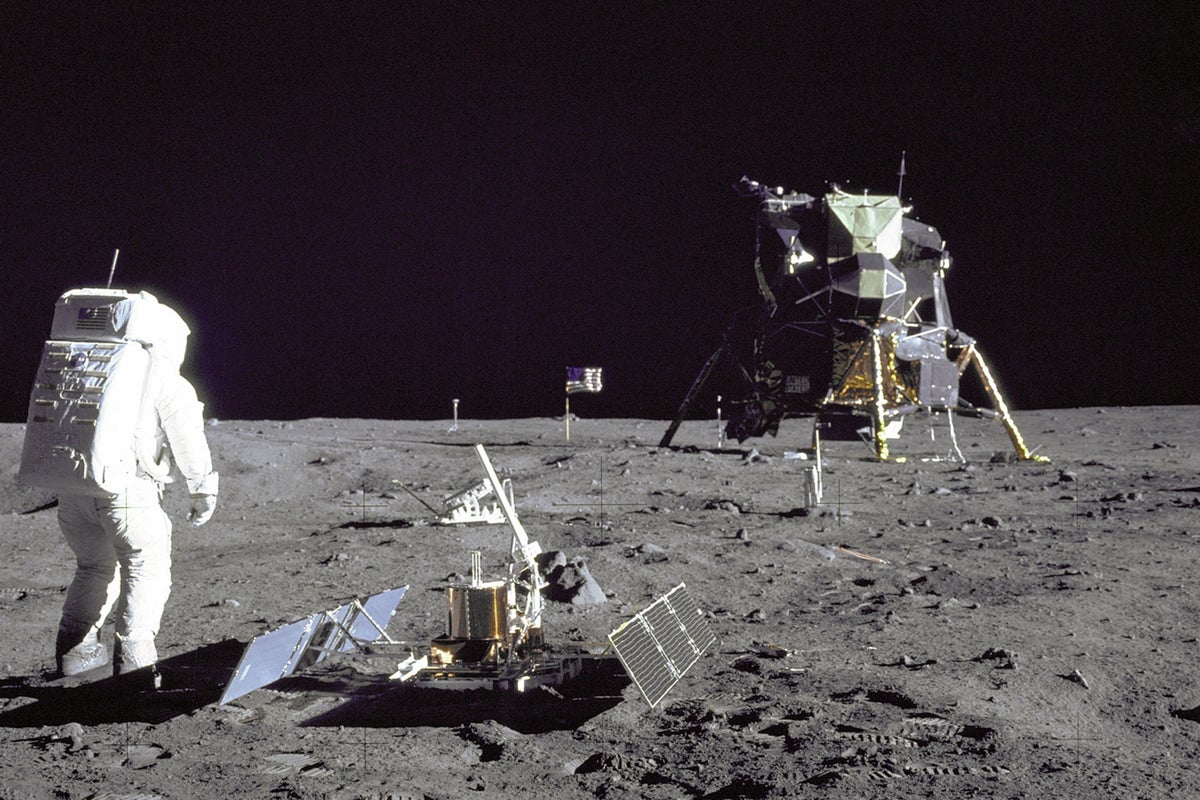Moon landing conspiracy theories: Why some think the Apollo 11 mission was fake

espite being heralded as one of the greatest human achievements ever, just half a century later 1 in 10 Americans still claim the 1969 moon landing was faked.
A survey conducted ahead of the 50th anniversary of the Apollo 11 mission to the moon also revealed that the number of people who believe it was staged has risen in the last 20 years.
Conspiracy theories surrounding the landings have been circulating for decades, with scores of people believing they were faked by NASA to boost America’s prestige on a global scale.
Despite a huge body of evidence to the contrary, millions believe the 12 astronauts who walked on the moon between 1969 and 1972 never actually stepped foot on it at all.
Fifty years on from Apollo 11 launch
What do moon landing conspiracy theorists claim happened?
The prevailing belief among conspiracy theorists is that the moon landings didn’t happen and that the whole Apollo programme was staged.
Most hoaxers claim that every American moon landing that took place from 1969-1972 was faked, and that no-one has ever stepped foot on the surface of the moon.
One of the most popular theories is that Nasa staged the 1969 moon landing in a Hollywood Studio and that it was directed by Stanley Kubrick and funded by Disney.
Others theorise that the public has been misled in the way the landings happened, while others believe that only a few elements of the Apollo programme were true – for example, some are divided over whether Yuri Gargarin ever made it into space, or whether only a few missions were faked.
What evidence do conspiracy theorists claim to have?
Most point towards what they claim to be photographic evidence of their belief. For example, a huge talking point is that no stars are visible in any of the photos taken during the first landing in 1969.
They also point to apparent clues in the photos which show objects in front of the crosshairs etched onto the camera glass – the argument goes that if it was real, the objects (such as astronauts or flags), would be behind the crosshairs.
Another claim is that there is no blast crater underneath the landing module, while others argue that the American flag appears to wave despite there being no wind on the moon.
The eerie lighting and the “inconsistent” way the shadows fall are used to argue that the 1969 was filmed in a studio using artificial lights.
The theory claims that if the only light source was the sun, then he shadows would run alongside each other.
What are the motives behind the conspiracy theories?
Those who claim the moon landings never happened claim the US staged them in order to boost its prestige on a global scale.
At the time, America feared it was losing the space race with the Soviet Union but that being able to land a man on the moon before their rivals would be viewed worldwide as a huge national and technological accomplishment.
Conspiracy theorists also claimed the landings were staged in order to avoid humiliation after President Kennedy declared the US would send a man to the moon before the decade was out.
Some also say the landings were used a distraction from the unpopular Vietnam War.
What are the origins of the conspiracy theories?
NASA’s Insight Lander – In pictures
Most trace the origins of many of these theories to Bill Kaysing, a former US Navy officer who published a pamphlet in 1976 called “We Never Went to the Moon: America’s Thirty Billion Dollar Swindle.”
Kaysing, who had no real knowledge of rockets, worked for a company that helped to designed the Saturn V rocket engines which carried the Apollo 11’s lunar and command modules into orbit.
He popularised many of the theories that exist to this day, such as the studio, stars, waving flag shadows and crater theories, claiming that the chances of a successful moon landing were 0.0017%.
A few years later in 1980, The Flat Earth Society popularised the conspiracy that Kubrick was behind the staged “film”, and that it was funded by Disney.
Moon landing conspiracy theories, debunked
- Stars aren’t visible in the photos: Astronauts used cameras with long exposure times, and it was lunar daytime
- Crosshairs appear behind objects: Overexposure caused the white areas to bleed over the black lines of the crosshairs
- No blast crater underneath the module: There wasn’t meant to be a crater in the first place, because thrust works differently in space than it does on earth.
- Flag appears to flutter in the wind: What appears to be ripples in the flag are actually creases from where it was folded in storage. Similarly, fluttering can be attributed to vibrations and movement after the astronauts moved the flag into place.
- Inconsistent shadows: A low sun, coupled with an uneven surface and moon dust, distorts shadow angles.
*** This article has been archived for your research. The original version from Evening Standard can be found here ***

